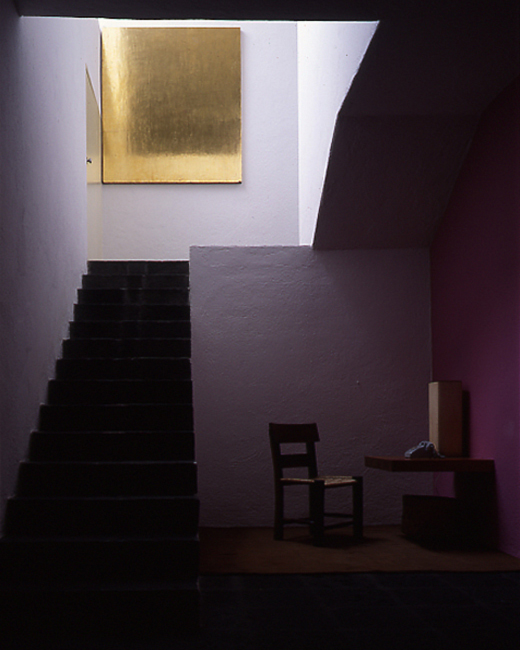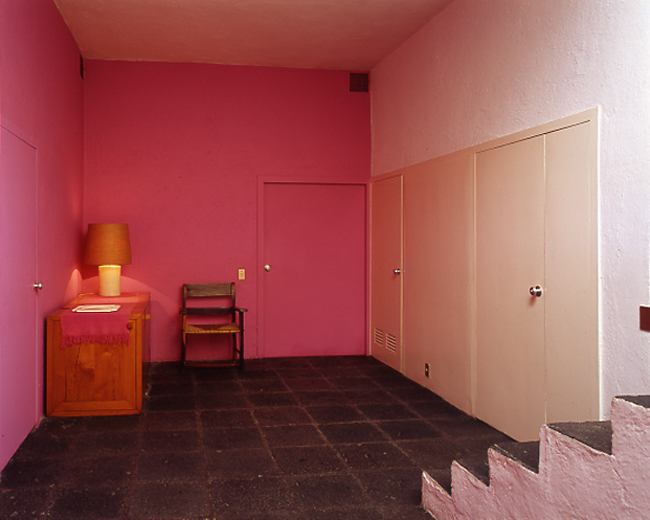GROUND FLOOR / Vestibule
The raw volcanic stone on the entrance hall floor extends through a second door to the vestibule. Known as exterior pavement, the stone accentuates the paradoxical sensation of being in an internal courtyard at the center of the house.
This second door divides the golden penumbra of the entrance hall from the intense light of the vestibule, composed by a reflection mechanism: From the outside yellow southern plane, light shines onto the golden surface of an abstract altarpiece, created by Mathias Goeritz, and bathes the intense pink of the walls. A faint pink shadow casts upon the white wall of the stairs, the essential color where reflections and shadows always return.
In the spaces we have visited, the chromatic experience can also be understood as a complementary sequence. This way, the honeyed yellow of the entrance hall saturates the pupil to receive the pink of the vestibule. This pink also works as preparation and catalysis, if we open a new door and we peek at the window of the dining room, which contains the intense shady green of the garden as background.
Twentieth century architecture had already used the wall-box to show a space defined and articulated by solid or transparent planes. However, in this vestibule, once again light fills a space carved in the white matter of the walls, which represents a substantially different way of constructing.
The volcanic stone rises as a subtle, dark skin over the stairs, whose tectonic weight evokes pre-Hispanic platforms. The stone continues its ascent to a second flight of stairs behind the wall and reaches a second space above the vestibule, where we find a dressing room visually separated by walls that never reach the ceiling, giving continuity to the entire height. It is a modern, fluid space, which does not contradicts the fact that it is carved in an ancient way.
A quick summary of the house could be made identifying two main spatial generators, both in scale and complexity, around which the rest of the spaces of the house revolve and converge: this main vestibule and the living room-library.
The door that connects these spaces, as also the doors leading towards the dining rooms and the kitchen, is found upon the pink wall of the vestibule. It would be inaccurate to think that this wall is simply painted. Colors, in Barragán’s architecture, are thin surfaces that dematerialize the faces of its volumes, but colors are also capable of owning volume and weight by themselves.
This is the case of the pink solid inserted to “make a corner” for the furniture in the vestibule that goes on to invade the interior of the dining and breakfast rooms, covering the sideboard and the crucifix above the doorway of the breakfast room. Totally painted pink, even the small chamber leading to the breakfast room, the kitchen and vestibule might be perceived as the subtraction of the volumetric density of color. This way, the inside of the wall remains pink.



